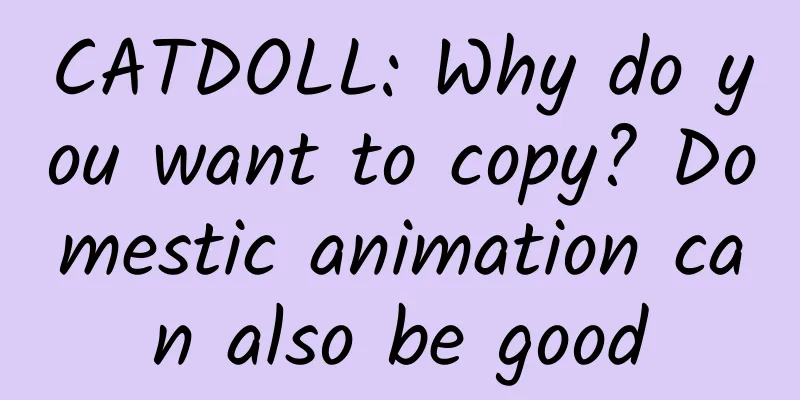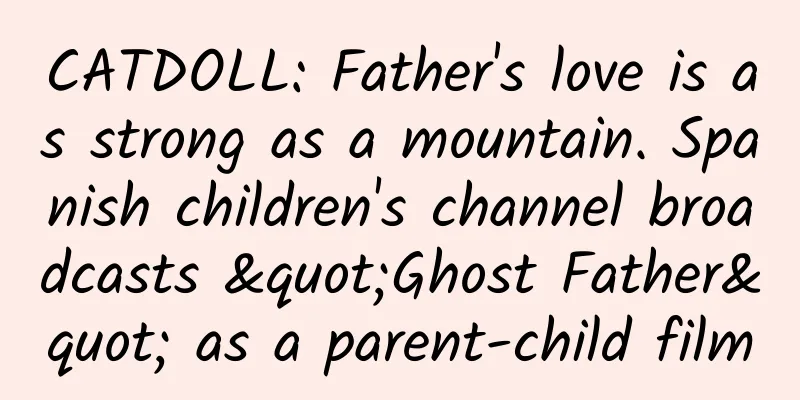CATDOLL: Why do you want to copy? Domestic animation can also be good

|
The topic of plagiarism has been a hot topic recently. There is a lot of plagiarism in domestic animations. Why does this always happen? Is it because Chinese people lack creativity? Or are foreign works just too good? Can't domestic productions be better than those of other countries? First, the action design and storyboard of several clips of the domestic animation "Eco Magical Girls" were accused of plagiarizing "Love Live". Then, the recent domestic animated film "Cars" was pointed out by netizens as plagiarizing "Cars" and publicly quarreled with Lu Hengyu, the director of the online animation "One Hundred Thousand Bad Jokes". Of course, plagiarism is not only seen in China, but also in foreign countries. For example, in the previous One Piece 778, the plot and depiction of Zoro's burst of strength and a few seconds of Pica were surprisingly similar to the setting of the 78th episode of the Great Sword. Some netizens said, "You must have plagiarized someone else's stuff!" There is also "Iron Man", which is adapted from "Marvel Comics". The brothers Leben and Lelei accused the armor of plagiarizing the battle suit design of their 2001 comic "Radix". It is said that after Iron Man was created in 1963, this superhero was usually portrayed as wearing simple spandex clothes and simple armored battle suits; but after the publication of "Radix", Iron Man's battle suit changed and became a highly detailed, mechanized full-body armor as portrayed in the film.
For some of the above examples, are their behaviors plagiarism or so-called "tribute"? Let's first take a look at how Baidu Encyclopedia explains it; Reference: "Use other people or things as a mirror to compare yourself with in order to learn from their experiences or lessons. It is a metaphor for the experience or lessons of others that can be used for your own reference and learning, so as to learn from their strengths and make up for your weaknesses. Plagiarism: refers to stealing other people's works as one's own, completely copying other people's works and changing their form or content to a certain extent under the same usage. It is a serious infringement of other people's copyrights and is also a behavior that is difficult to identify in copyright trial practice. As for the explanation of these two words, I personally think that they basically mean the same thing. As for whether it is plagiarism or reference, this question should be a matter of opinion. Of course, it is not good to judge the conclusion of this matter according to the public's eyes. Although it is more likely to gain everyone's recognition if it is judged according to the public's point of view, some things may affect people's judgment standards due to the popularity of the work or other things. If the popularity of the "plagiarized" work and everything else are higher than the "plagiarized" work, then it is very likely to affect their judgment. Because the influence of the work has been deeply rooted in people's hearts! Another question is why there are problems of plagiarism and reference in current works; this has to do with the issue of creation; I, the editor, made a bold guess; creation requires innovation; because of the development of the industry and the progress of human civilization; humans have been learning the literary works of their ancestors since childhood, so they will inevitably be influenced by the thoughts of their ancestors; sometimes they think that it is good to do things according to the methods of their ancestors, and some of their things may be their own benchmarks! Little do they know that such things have already stifled their own innovative thinking; most people will be imprisoned by the thoughts of their ancestors; as soon as something happens, they will first think about whether there is something similar before, or if someone has done the same thing, and few people will first consider whether I have a way to think about how to do it myself, instead of considering how to find previous examples to complete it; But in this case, the time we spend thinking about our work may be doubled. Sometimes the answer you rack your brains to come up with may be the same as someone else's method, or it may only take half a minute to find it on Baidu. For these two methods, one is purely your own idea, although the result may be exactly the same! The other is found out on Baidu in half a minute. I think the first one can be called original rather than plagiarized or borrowed; and the second one is what people often call plagiarism or borrowing. Why? I believe that everyone understands without me explaining too much. As the saying goes, there are all kinds of birds in a big forest. Can you say that your idea can only be thought of by you? Or that you are the first to come up with it? All you can say is that you may be the first to publish it to the world; but you are not necessarily the first person to come up with it. As for what is original and what is plagiarized, it is not clear. I think everyone should understand what I mean. So why do Chinese animations always "plagiarize" foreign works? Is it that only foreign animations can be made, but Chinese animations cannot? Actually, it is not true. Domestic animations from the earliest days are actually very good. For example, the earliest ink-and-wash animation "Little Tadpole Looking for Mother" is believed to have been heard by everyone even if you have not seen it. Don't say that this thing is childish. In the early days, animation did not form a complete system, and there was no clear distinction between adult animation and children's animation. However, in terms of the production and innovation of the early film, it is second to none, and the French "Le Monde" once commented on this film: "Chinese ink painting, the soft scenery, the delicate brushwork, and the actions that express worry, hesitation and happiness make this film charming and poetic." What is the significance of this evaluation? I think that because of the film "Little Tadpole Looking for Mother", foreigners have learned about the unique characteristics of China! Ink painting, poetry, etc.; let the domestic characteristics go abroad! Let the world know the charm of our works! If you don't feel anything, think back to the Japanese comics you have watched; no matter comics, animations, novels, as long as they are works that you are familiar with in Japan; which one does not have a strong atmosphere of Japanese local culture? Over time, you may even want to learn more about its local culture. Similarly, due to Japanese comics, Japanese local culture and its characteristics have been brought out of the country, forming their own unique characteristics.
Moreover, the work has won various honors at many international film festivals more than 10 years after its completion! Remember, this film is only 15 minutes long! This shows that domestic animation can be done well enough and is not inferior to the works of famous figures such as Hayao Miyazaki! Next, let's take the puppet animation "Avanti", which I believe everyone has at least heard of. The film was produced by the "Shanghai Animation Film Studio" and also won a few awards and is well-known to the world. Can you say that this animation is inferior to some current Japanese comics? "Shuke and Beta" and other works were also produced by the Shanghai Fine Arts Film Studio. They are also well-known excellent animations; of course, these were all in the early days; these works should have been among the best works in the world at least at the time. But why didn't these things continue? Looking at the Japanese animation industry, the early works also had different styles, and both the characters and the story plots were particularly "naive". But they did not interrupt their creation, and gradually improved and developed to the present, forming a relatively mature and unique feature of their own! And it is recognized by the world; as for why the domestic production did not continue and create it, I think everyone understands! Of course, there are some excellent works now, such as the 3D animation "Qin Shi Ming Yue" and "Nano Core". Are these two works not as good as some Japanese animations now? They are equally good, or even better than those Japanese animations, but why are they not as popular as Japanese animations? This is a question worth pondering. For example, the animation of "My Name is Bai Xiaofei" (also known as "Corpse Brother") is very well done, and the plot is also good, but why do I always feel that it is a little worse than Japanese animation? I believe that I am not the only one who feels the same way; the reason should be the dubbing problem of the animation, which always feels like imitating the style of Japanese animation now; but the result of imitation is not as good as others! Because one person speaks Japanese and the other speaks Mandarin; the pronunciation, syllable composition, sentence segmentation and breathing rhythm of the two languages are completely different, and there is no way to fully reproduce the meaning expressed by Japanese! This can only be a unique feature of Japanese, and it is impossible to make any good progress by imitating it! What we need is our own characteristics, and we can only carry forward the Chinese animation by creating our own independent brand! "Little Tadpole Looking for Mom" is a good example. Foreign comments on this work are not "perfect reproduction of XXX's XXX style, or perfect integration of XXX's XXX" but Chinese! Chinese ink painting and Chinese poetry! This is our unique feature!
Finally, I hope that everyone will support domestic animation, give more suggestions for domestic animation, and improve domestic animation. Since we like animation as a product, we should develop our own works instead of blindly promoting works from other countries. It is our job to export our own works abroad! |
<<: CATDOLL: American classic animation "Avatar: The Legend of Korra" launches comic version
>>: CATDOLL: "Absolutely Cute Children" new animation project will be announced soon
Recommend
CATDOLL: Follow-up to the A-station incident: Aofei Animation claims it has no connection with Acfun
Guangzhou Daily (Reporter Zhang Yu) Recently, the...
CATDOLL: TV animation "High School Star Opera" promotional PV released
The promotional PV of the original animation &quo...
CATDOLL: "Fairy Tail" Chapter 484 Six Monsters
"Fairy Tail" Chapter 484 Six Monsters; ...
CATDOLL: Anime Starry Sky Evening News: Japanese media selected the strongest comic of "Shonen Jump" and launched a life-size figure of "EVA" to sell nostalgia
Hello everyone, it's time to review the day&#...
CATDOLL: "Dragon Ball: Super" animation episode 22 text information Captain Ginyu will be resurrected?
The plot of Dragon Ball Super continues to revolv...
CATDOLL: Otaku dressed up as a "Gundam" to attend his coming-of-age ceremony and was criticized for being shameless
Japanese otakus seem to be getting more and more ...
CATDOLL: Daisuke Ono releases his first live concert BD, the release date is set for September 7th
The first concert BD of voice actor and singer Da...
CATDOLL: Beijing Municipal Bureau of Culture approved the holding of "Hatsune Miku 2016 China Concert"
On September 1, the "Beijing Municipal Gover...
CATDOLL: The animation "One Punch Man" has officially finished, and the producer released a picture to celebrate
If we talk about which new series in October has ...
CATDOLL: "Free!" The official trailer of the movie is released and the new promotional poster is released
The theatrical animation "High☆Speed! -Free!...
CATDOLL: Drug-related voice actress Ai Takabe confessed to participating in the "pillow business" and her extravagant private life
Some time ago, the Japanese idol voice actor Ai T...
CATDOLL: The Japanese live-action drama "Small Actions in Class" released the actors' makeup photos
Previously, Anime Star had reported the news that...
CATDOLL: The domestic animation "Journey to the West: Hero is Back" has attracted heated discussions and received overwhelming praise
Recently, a large number of "trolls" su...
CATDOLL: Fox Spirit Matchmaker premieres on June 26th, Dragon Boat Festival preview screening in six cities
On June 26, the animation of the popular comic bo...
CATDOLL: White Bear Cafe's new work "today's special" will be on sale
The healing comic "White Bear Cafe" wil...









